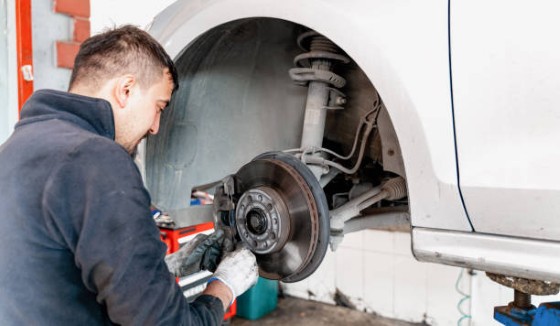Brake maintenance is an essential aspect of ensuring safety while driving. However, most vehicle owners tend to shy away from performing brake maintenance tasks themselves, fearing they might damage their car or end up with an accident. But, with a little bit of knowledge and the right tools, some DIY brake maintenance tasks can be done safely. This blog post will cover some safe brake maintenance tasks that you can perform yourself, and some that require professional services.
Brake Pads Replacement
Brake pads are one of the most significant components of your vehicle's braking system. They are meant to withstand constant friction and wear down over time. If you hear a screeching noise when applying the brakes, it might be high time to replace the brake pads. Replacing the brake pads yourself can be a straightforward and cost-effective task that only requires a few tools. However, this task should be carefully executed since improper installation can cause brake failure, resulting in hazardous driving conditions.
Brake Fluid Replacement:
Brake fluid is what makes the brake system functional. Over time, brake fluid can become contaminated, which affects its performance. Replacing the brake fluid yourself can save you considerable amounts of money. However, this task is more complicated than just draining and replacing the old fluid. This task should be executed with caution, and you should refer to your vehicle's manual for this procedure. Proper replacement requires precise measurements and the right tools.
Brake Rotors Resurfacing:
The brake rotor is the component where the brake pads come into contact when braking. When the rotor is damaged or warped, it can cause a vibration that can affect braking performance. Resurfacing the brake rotor involves grinding the surface of the rotor to remove any buildup, unevenness on the surface, or warping. While it is possible to resurface rotors at home, this task requires specialized equipment. It is best to allow professional Brake Warehouse to handle this task correctly.
Bleeding the Brake Lines:
The brake system comprises brake fluid, master cylinder, brake lines, calipers, and brake pads. These components work together to provide adequate stopping power. Bleeding the brake lines is a vital task that removes any air bubbles from the brake lines, which can affect braking performance. You might need to bleed the brake lines if you replace any brake component or if you notice a spongy brake pedal. This task requires two people, and it is best to refer to your vehicle's manual.
Brake System Inspection:
Inspecting your brake system regularly can help catch any potential issues before they escalate. A quick inspection can include checking the brake pads, rotors, fluid levels, and brake lines for any signs of wear, corrosion, or leaks. This task is easy to perform, and you can do it yourself in your garage. However, if you notice any significant issues, it is best to seek professional services to avoid potential accidents.
Conclusion:
As an responsible vehicle owner, it's vital to ensure that your brakes are always in the best condition possible. DIY brake maintenance can save you considerable amounts of money in the long run, but it requires careful execution, knowledge, and the right tools. In conclusion, some brake maintenance tasks are safe to perform yourself, while others require professional services. It is always advisable to seek the services of a professional if you are in any doubt about the safety of the task or your ability to execute it correctly. Remember, always prioritize safety over savings when it comes to brake maintenance.









